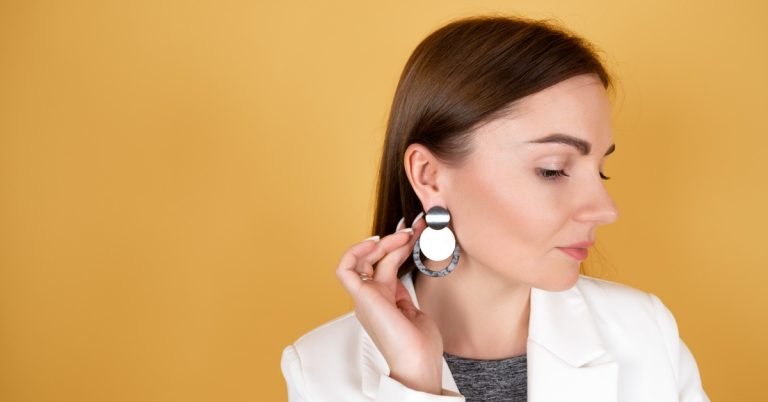Can I Bring My Own Earrings When I Get It Pierced?
Have you ever wondered if it’s possible to bring your own earrings when you go to get a professional piercing? Well, I had the same thought recently and decided to find out. Coincidentally, I’m an expert piercer with over ten years of experience in the industry! So if anyone knows the answer, it’s me.

In this article, I’ll be sharing my knowledge on whether or not you can bring your own jewelry for body piercings.
I understand that many people have safety concerns about getting their ears pierced professionally. It’s understandable – after all, we’re dealing with needles going through sensitive areas of skin! That’s why understanding the rules around bringing your own jewelry is so important before making any decisions.
Read on for more information about what you need to know before bringing your own earrings into a piercing studio.
Table of Contents
Professional Piercing Studio Guidelines
When it comes to ear piercing, you want to make sure that everything is done in the safest and most hygienic way possible.
The jewelry materials used should be of high quality and must be sterilized properly before use.
At our professional piercing studio, we take pride in using only medical-grade stainless steel jewelry pieces that have been thoroughly cleaned and disinfected with sterilization techniques approved by health authorities.
We also ensure that all surfaces are sanitized between each procedure so as to provide a safe environment for everyone.
We understand that some people may feel more comfortable bringing their own jewelry when getting pierced.
Although this isn’t necessary, there are certain reasons why someone might choose to do so–and we can accommodate them!
Our knowledgeable staff will gladly inspect any items brought in prior to piercing and discuss potential risks or concerns if needed.
No matter what type of material you plan on wearing in your newly pierced ears, rest assured that safety and hygiene remain top priority at our studio.
We strive to make every experience enjoyable from start to finish while ensuring complete satisfaction for our customers along the way.
So come visit us soon and let’s get started making those dreams a reality!
-
Product on sale
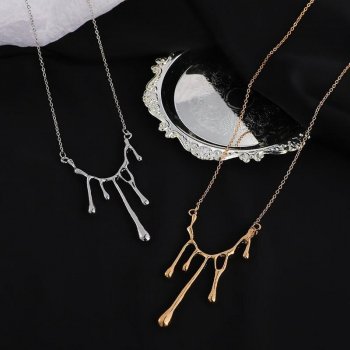 Elegant Liquid Drop Shape Yarn Pendant NecklaceOriginal price was: $8.32.$7.49Current price is: $7.49.
Elegant Liquid Drop Shape Yarn Pendant NecklaceOriginal price was: $8.32.$7.49Current price is: $7.49. -
Product on sale
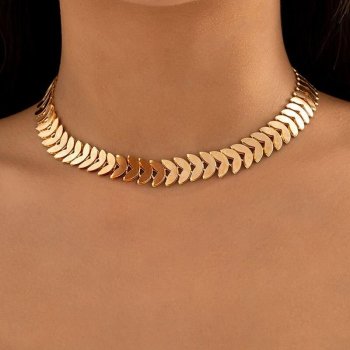 Gold Petal Choker Necklace for WomenOriginal price was: $11.73.$8.80Current price is: $8.80.
Gold Petal Choker Necklace for WomenOriginal price was: $11.73.$8.80Current price is: $8.80. -
Product on sale
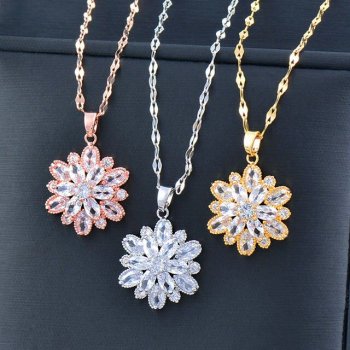 Womens Gold-Plated Crystal Flower Pendant ChokerOriginal price was: $11.73.$8.80Current price is: $8.80.
Womens Gold-Plated Crystal Flower Pendant ChokerOriginal price was: $11.73.$8.80Current price is: $8.80. -
Product on sale
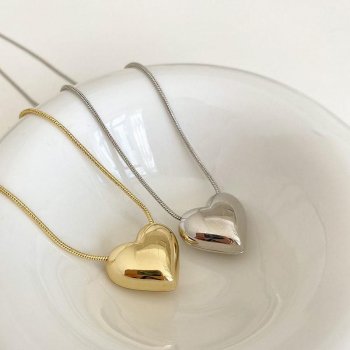 Gothic Trendy Heart Pendant NecklaceOriginal price was: $13.90.$6.95Current price is: $6.95.
Gothic Trendy Heart Pendant NecklaceOriginal price was: $13.90.$6.95Current price is: $6.95. -
Product on sale
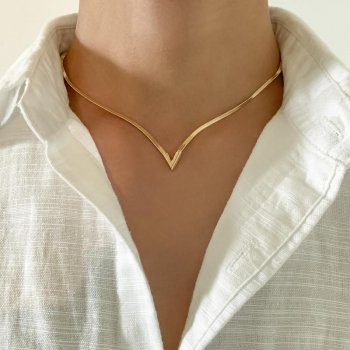 Elegant V-Shaped Flat Snake Chain NecklaceOriginal price was: $7.21.$6.49Current price is: $6.49.
Elegant V-Shaped Flat Snake Chain NecklaceOriginal price was: $7.21.$6.49Current price is: $6.49. -
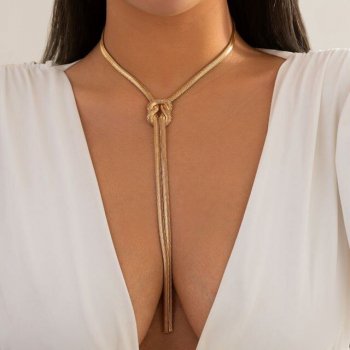 Tassel Twist & Flat Snake Chain Chunky Necklace$9.65
Tassel Twist & Flat Snake Chain Chunky Necklace$9.65
Reasons For Bringing Your Own Earrings
Bringing your own earrings is a great way to personalize the body art experience. Not only will you be able to find an earring that fits your style and budget, but it can also save you money in piercing costs.
Here are five reasons why bringing your own set of earrings is beneficial:
- You get to choose which type of metal goes through your skin; some people have allergies or sensitivities to certain metals.
- With so many different kinds of shapes, sizes, and designs available for purchase, you’ll be able to express yourself with the perfect pair of earrings!
- It’s more cost effective since you don’t need to buy a new pair from the piercer each time.
- There’s no risk of contamination as long as they’re kept clean and sterilized before use.
- They make a great gift if you decide that someone else should join in on this unique experience!
Having control over what kind of jewelry gets placed into your ears gives you peace of mind when getting pierced. Additionally, being prepared ensures that all necessary items are accounted for prior to arriving at the shop – reducing stress levels on both sides!
As we move forward, let’s consider safety considerations for body piercings.
Safety Considerations For Body Piercings
When it comes to body piercing, safety is of the utmost importance. To ensure a safe and successful procedure, there are several considerations you must take into account before getting your ears pierced.

First and foremost, it is important to consider what kind of jewelry materials you plan on using for your new piercings.
| Jewelry Materials | Tips |
|---|---|
| Titanium or surgical steel | Hypoallergenic and non-reactive metals that can reduce irritation. |
| Gold Plated Metals | May contain nickel, which may cause skin reactions in some people. |
| 14K Gold or higher | Non-reactive metal with fewer chances of irritation than gold plated items. |
These materials should be made from hypoallergenic metals like titanium or surgical steel as these will not react to the human body and reduce any chance of infection due to irritation caused by the material itself. For example, gold plated metals may contain nickel which could cause skin reactions in some individuals so 14k gold or higher would be safer option for those who have sensitive skin types.
Another factor to keep in mind when considering body piercing is pain tolerance levels. While ear piercing does involve a certain amount of discomfort, this feeling usually only lasts for a few seconds during insertion process .
It’s normal to experience minor swelling afterwards but if you find yourself having difficulty tolerating the sensation then talk to your piercer about ways that they can help make the experience more comfortable such as numbing creams or cold compresses applied directly after the initial puncture has been made.
Allowing yourself time to prepare mentally prior to getting pierced can also help alleviate potential anxiety related issues associated with fear of needles or sharp objects being inserted into ones flesh.
By taking both physical and mental factors into consideration beforehand, one can significantly increase their odds of having an enjoyable experience while also reducing likelihood of experiencing adverse effects due to improper planning or lack thereof altogether…
Types Of Jewelry That Are Acceptable
So you’ve decided to get a piercing and are ready for the big step. But before diving into the process, it’s important to know what type of jewelry is acceptable for your body piercings. After all, having quality body jewelry.
Whether you’re looking for earrings for an earlobe piercing or rings for stretching ears, there are plenty of options available on the market today.
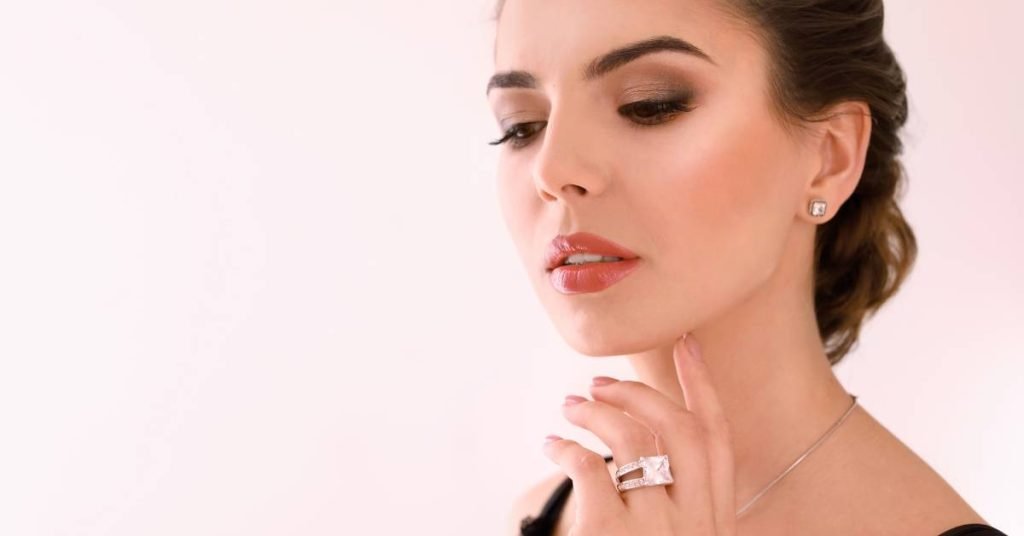
When selecting body jewelry, it’s essential that you use materials that will not irritate your skin. For most types of piercings, stainless steel or titanium jewellery is generally recommended as these metals have very low rates of irritation when in contact with human tissue. |For more on this, check out our post on is stainless steel good for earrings.
If you plan on wearing longer-term pieces such as plugs for ear stretching services, then labret studs and circular barbells made from implant grade materials may be more suitable due to their strength and durability.
No matter which material you choose, take extra care to ensure that the piece meets safety standards – look out for any sharp edges or thinning wires that could potentially cause further injury if left unchecked.
Avoid using second hand jewellery whenever possible as this carries a much higher risk of infection and transmission of diseases between former owners; instead opt for brand new items purchased from reputable suppliers specialising in premium grade body jewellery.
With proper selection and maintenance of your chosen jewellery, your next task would be cleaning and sanitizing it so keep reading to find out how!
Cleaning And Sanitizing Your Jewelry
Properly cleaning and sterilizing your jewelry prior to ear piercing is of utmost importance. This can help prevent skin reactions that may occur due to bacteria buildup on the surface of the jewelry.
Here are a few tips from an ear piercing specialist for proper care:
- Wash the jewelry with liquid antibacterial soap and warm water before using it for piercings.
- Use a cotton swab or soft cloth soaked in alcohol to clean any residue off the surface of the metal parts, being sure to let them air dry completely thereafter.
- When possible, have all body piercings done by professional piercers who use single-use needles and fresh pieces of sterile jewelry for each client.
By following these simple steps you can protect yourself from potential skin irritation caused by bacteria on your jewelry, allowing you to enjoy your new look with peace of mind!
Moving forward, we need to talk about disinfecting your piercings properly so they stay healthy and free of infection…
-
Product on sale
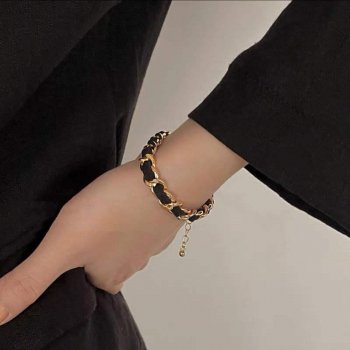 Elegant Vintage Rose Gold Black Woven BraceletOriginal price was: $14.60.$9.49Current price is: $9.49.
Elegant Vintage Rose Gold Black Woven BraceletOriginal price was: $14.60.$9.49Current price is: $9.49. -
Product on sale
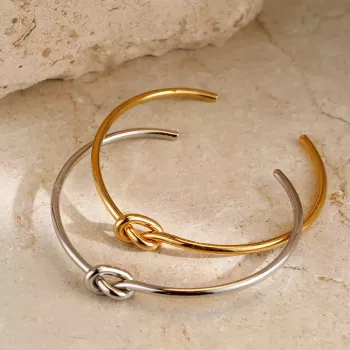 Twist Knot Stainless Steel Cuff BraceletOriginal price was: $50.46.$15.29Current price is: $15.29.
Twist Knot Stainless Steel Cuff BraceletOriginal price was: $50.46.$15.29Current price is: $15.29. -
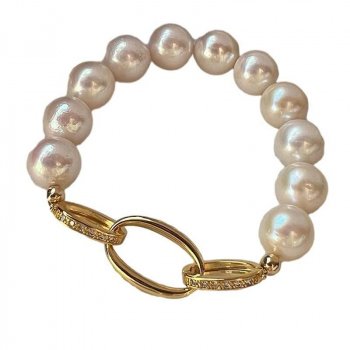 Chic Crystal & Pearl Hand Catenary Fashion Mood Tracker Bracelet$9.49
Chic Crystal & Pearl Hand Catenary Fashion Mood Tracker Bracelet$9.49 -
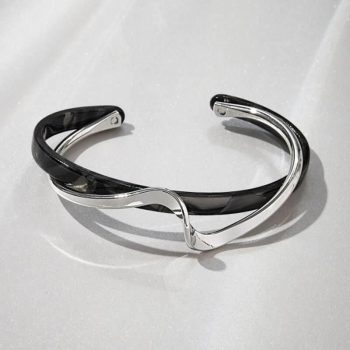 Geometric Metal Charm Bracelet for Women$14.49
Geometric Metal Charm Bracelet for Women$14.49 -
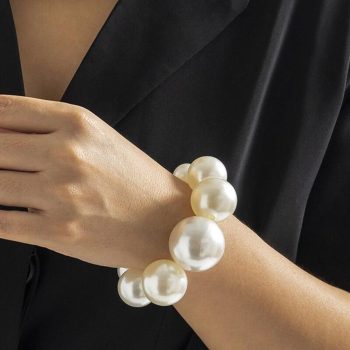 Womens Round Pearl Charm Bracelet$13.95
Womens Round Pearl Charm Bracelet$13.95 -
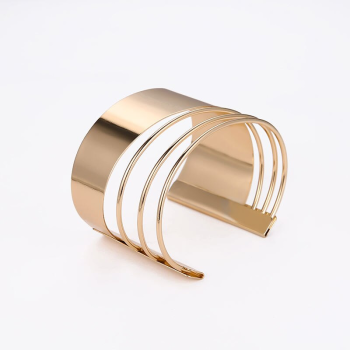 Women’s Bohemian Gold-Plated Geometric Cuff Bangle$15.65
Women’s Bohemian Gold-Plated Geometric Cuff Bangle$15.65
Disinfecting Your Piercings
Back in the day, piercings were a rite of passage and an act of rebellion. But today, they are a popular form of self-expression! Many people want to express themselves with their own jewelry when getting pierced. While this is totally doable, there are some important steps you should take to ensure your piercing is done safely and correctly.
When it comes to sterilization methods for body piercings, professional ear piercing specialists will always use disposable needles that have been pre-sterilized. If you choose to bring your own jewelry from home, make sure you follow all aftercare advice given by the specialist so that your piercing heals properly and without complications.
To keep your jewelry safe during the healing process, don’t touch it too often or expose it to different cleaning products as these could irritate the area around the piercing site. Check out this post, when you can change your earrings after piercing.
It’s essential that any jewelry used in new piercings be made out of high quality material and thoroughly disinfected prior to being inserted into the skin.
This means taking extra care if opting for homemade accessories and doing more research before selecting a product for use on freshly pierced skin. Taking these precautions can help reduce potential risks associated with using at-home supplies and guarantee a healthier healing experience overall.
Risks Of Using Your Own Jewelry
When considering whether to bring your own earrings when getting pierced, it’s important to be aware of the risks and rewards. Although there are some material choices that can be used safely with proper sterilization practices, many people prefer to purchase their jewelry from a piercing studio or body jewelry store due to the convenience and peace of mind.

The first thing you should consider is what type of metal you plan on using for your new piercing. Jewelry made out of certain metals such as titanium and gold is generally safe for piercing use.
However, stainless steel may contain nickel which can cause an allergic reaction in some individuals, so make sure to look into this before making a decision. Additionally, if you choose plastic or acrylic materials they must also be properly sanitized prior to insertion. This means boiling them in water for at least 15 minutes or more.
It’s always best practice to buy jewelry intended for body piercings from a reputable source since these items have often been pre-sterilized and inspected for quality assurance purposes.
If you still decide to go ahead with bringing your own jewelry then take extra precaution by having it professionally cleaned and sealed prior to wearing it in any freshly pierced area.
With all these factors taken into consideration, it is possible to find the right piece of jewelry that works well for both you and your newly pierced ear lobes! Now let’s move onto discussing aftercare tips for successful piercings!
Aftercare Tips For Piercing Success
Selecting the right earrings for your piercing is an important part of having a successful procedure and experience. Before you get pierced, take some time to carefully select a pair that suits both your taste and comfort level.
The ideal choice should be hypoallergenic and free from any metals or materials which may cause irritation. It is also best to go with something that is lightweight so it won’t put too much pressure on the area while it heals.
When selecting your earrings, pay attention to their shape as well. If they are longer than 1/2 inch in length, there is more potential for them to snag on clothing and towels during healing, which can easily cause infection. Furthermore, circular barbells provide better circulation than straight ones do when worn through newly-pierced ears.
It’s essential to properly clean your new jewelry before wearing it; this will help reduce the chance of irritations and infections after being pierced. Use only cleaning solutions specified by a professional piercer—never use alcohol or hydrogen peroxide!
When caring for the piercing afterwards, gently wash the area twice daily with soap and water until healed completely. Keep all dirt and bacteria away from the wound site at all times by avoiding swimming pools, hot tubs and ocean waters until fully healed up – usually about 6 weeks post-procedure!
Frequently Asked Questions

Will My Piercing Hurt?
When it comes to getting your ears pierced, a lot of people worry about the pain.
While some discomfort is normal during and after the piercing process, with careful cleaning and following proper aftercare tips you can minimize any uneasiness.
Generally speaking, if done properly by an experienced ear piercing specialist, most piercings are relatively painless – or at least bearable.
With that being said however, everyone’s pain tolerance level is different so your experience may vary from someone else who has gotten their ears pierced before.
How Long Does It Take For A Piercing To Heal?
On average, it takes 6-8 weeks for a piercing to heal completely.
However, this varies depending on the type of piercing and how well you follow aftercare tips.
For instance, an earlobe piercing usually heals in 4-6 weeks while cartilage piercings may take 8-10 weeks or longer due to their location and more difficult healing process.
It’s important to make sure you’re taking good care of your new piercing by keeping it clean with designated cleansing solutions and making sure to not play with it too much as that can increase the amount of time needed for it to fully heal.
What Type Of Jewelry Should I Choose?
When you’re choosing jewelry to get your piercing done, it’s important to go with something that is safe and sanitary.
Ideally, the jewelry should be made of stainless steel or titanium since these metals are very resistant to bacteria and other contaminants.
Make sure the jewelry has been sterilized by autoclave prior to being used in any piercings as this is one of the most effective sterilization methods.
Additionally, make sure you take proper care of your piercing afterwards, including regular cleaning with a saline solution and avoiding rough activities like swimming or playing contact sports until it has healed completely.
Are There Any Age Restrictions For Getting A Piercing?
When it comes to finding a piercer and getting your ear pierced, age restrictions can vary.
Generally speaking, most piercing studios will require individuals under the age of 18 to have parental consent before they can get pierced.
That said, some states may impose stricter guidelines so be sure to check locally before you make an appointment.
Additionally, aftercare advice should always come from a professional piercer or doctor – this includes tips on how to properly care for a new piercing and what type of jewelry is best suited for your individual needs.
Is There A Risk Of Infection From Using My Own Jewelry?
Piercings are a fun way to express yourself, but if you’re not careful it can also become risky.
As an ear piercing specialist, I always caution my clients about the risk factors of using their own jewelry – even when they’ve been sterilized with the best techniques available.
Using your own pieces may seem like an easy solution, however infection is still possible due to improper cleaning or handling prior to insertion.
To ensure safety and prevent any long-term effects from occurring, I highly recommend opting for professionally purchased body jewelry instead.
Conclusion on Can I Bring My Own Earrings When I Get It Pierced?

When it comes to getting a piercing, there is no one-size-fits all answer. Everyone’s experience and healing process will be different.
However, if you’re considering bringing your own jewelry when you get pierced, always make sure that the material is safe for body piercings. Most importantly, don’t forget to take care of your new piercing as recommended by your piercer or doctor!
It might also surprise you to know that more than half of people between 18-25 have at least one body piercing. That statistic speaks volumes about how popular this form of self expression has become in recent years – so why not join in?
With the right preparation and advice from a professional, getting pierced can be an exciting way to express yourself safely and securely.





